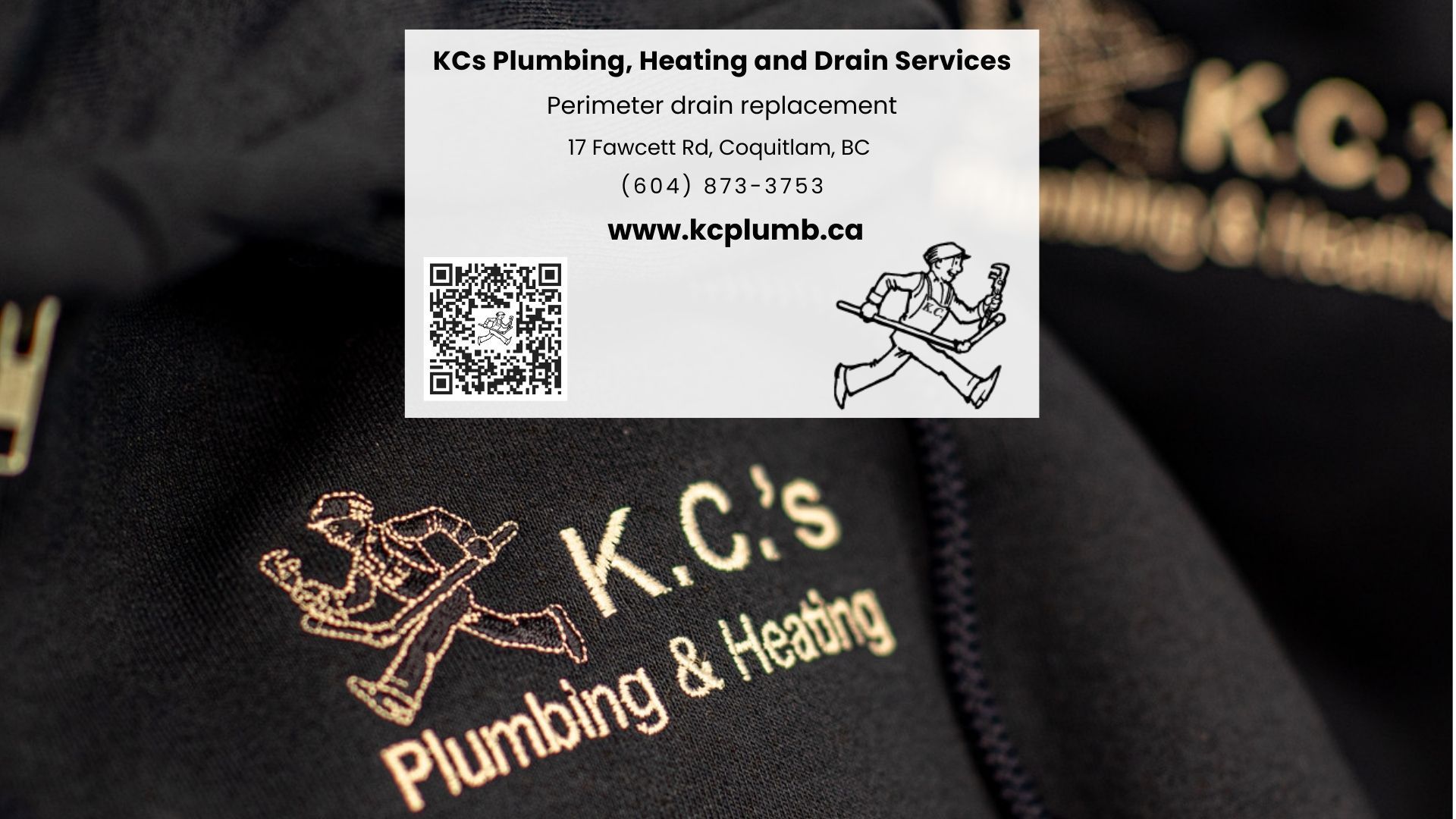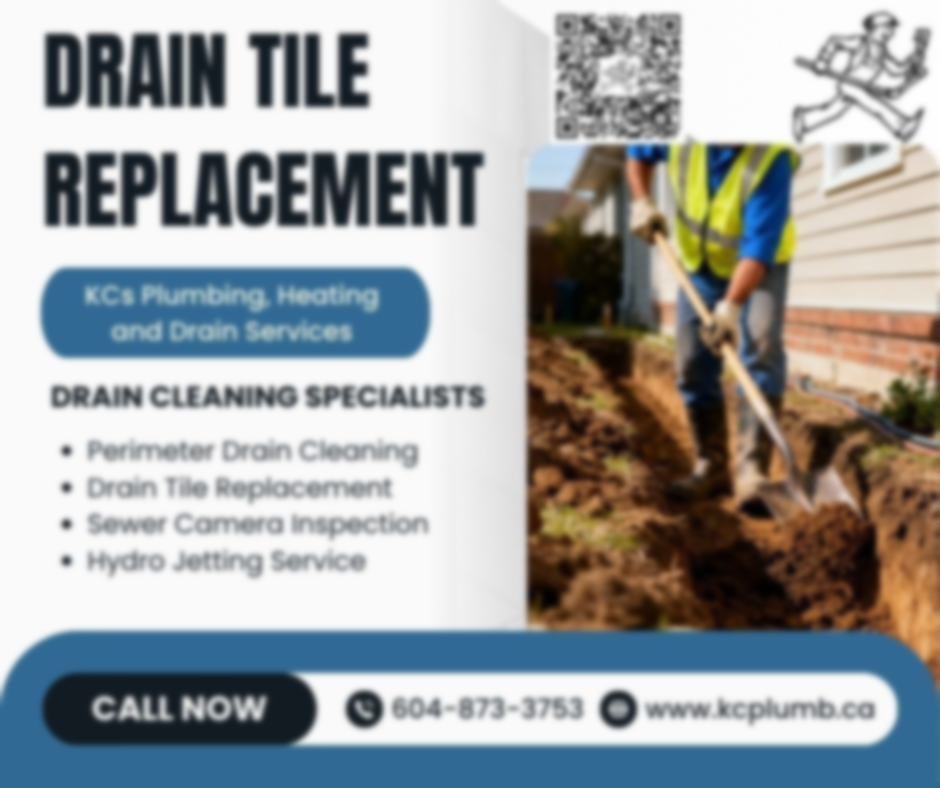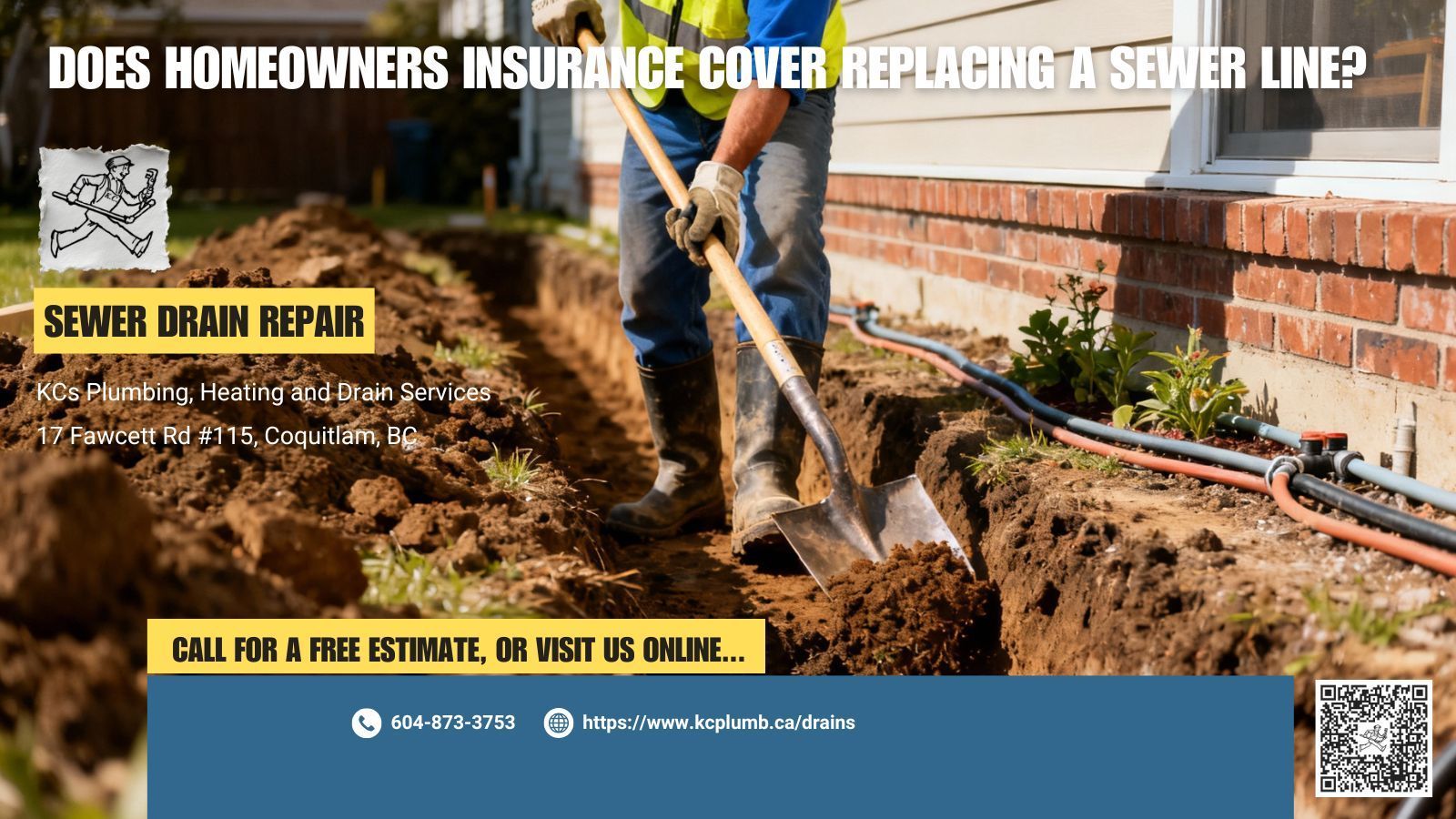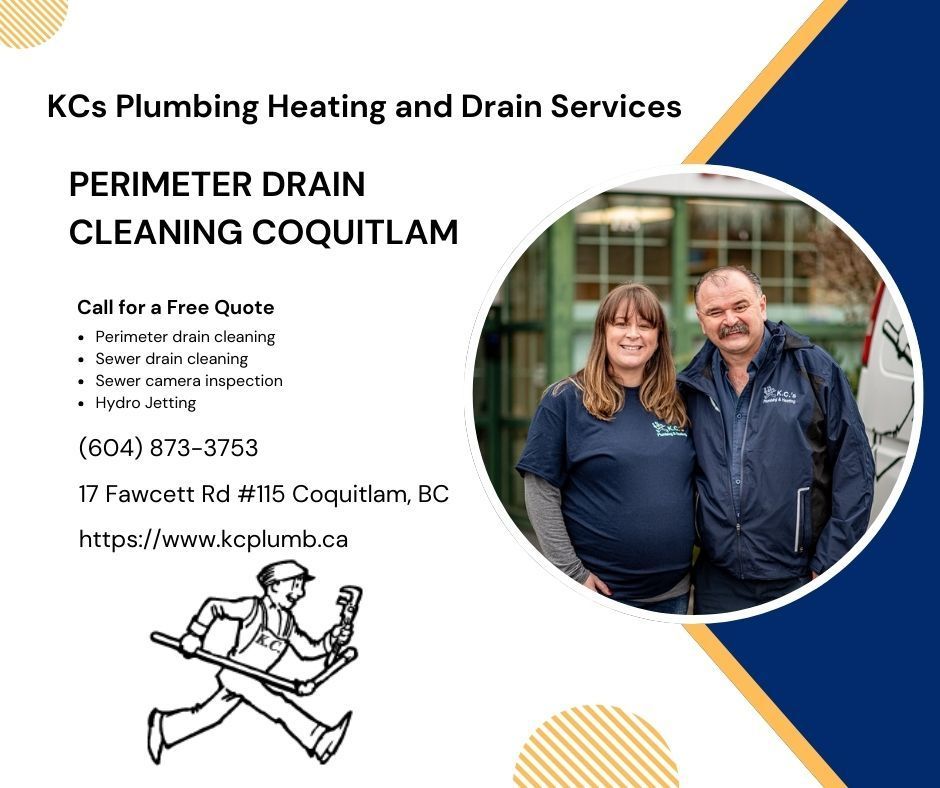Perimeter Drain Replacement in Coquitlam BC
A properly functioning perimeter drain system, also referred to as weeping tile or a French drain, is crucial for protecting your home’s foundation from water damage. This network of perforated pipe, typically PVC perforated pipe or older clay tiles, runs around the perimeter of the house, collecting groundwater and directing water away from the foundation. However, over time, especially in older homes, these systems can fail, leading to costly repairs. Whether you need perimeter drain cleaning, a sewer line repair, or complete
perimeter drain replacement, understanding the signs and options is essential.
Why Your Perimeter Drain Might Need Repair or Replacement
Several factors contribute to the eventual need for perimeter drain repair or replacement. Many older perimeter drain systems, often using clay tiles, suffer from age-related deterioration. Clay tiles are susceptible to cracking and root intrusion, allowing debris to enter and causing blockages. Even newer PVC pipes can be affected by root intrusion, clogs from sediment buildup, or improper installation. A failing drainage system may manifest in several ways:
- Wet basement: Persistent dampness or water in your basement is a classic sign of a failing perimeter drainage system. Water stains on your basement walls are another indication of a leak.
- Water damage: Water damage to your foundation wall, basement or crawl space, and even damage to your home’s interior, are all serious consequences of a failing drain system.
- Foundation issues: Cracks in your foundation can be caused by prolonged exposure to moisture.
- Clogs and blockages: A slow-draining or completely clogged drain tile system indicates a serious problem.
- Water stains on your basement walls: These stains are a clear indicator that water is escaping the pipe and seeping into your home.
Tackling Tough Drain Blockages with Roto-Rooting
Roto-rooting is a specialized plumbing technique designed to eliminate stubborn clogs and obstructions from drains and sewer lines. The name originates from the pioneering Roto-Rooter machine, developed in 1933, which featured a rotating cable equipped with a cutting head to slice through debris lodged inside pipes. Modern roto-rooting services have evolved to include high-tech tools such as motorized augers, hydro-jetting systems, and video inspection cameras, allowing plumbers to accurately locate and clear out grease buildup, tree roots, and other blockages.
One of the standout features of the roto-rooting machine is its metal cutting blade, engineered specifically to tackle invasive tree roots that penetrate sewer lines. Often considered a last-ditch effort before full pipe replacement, this method can significantly prolong the lifespan of aging sewer systems by restoring flow and preventing further damage.
Diagnosing the Problem
A thorough inspection is crucial to determine the extent of the problem. Our team at KCs Plumbing uses advanced techniques, including a drain camera for a detailed camera inspection, to locate blockages, pinpoint leaks, and assess the overall condition of your drain tile system.
The inspection process reveals the type of drainage system you have, identifies any existing damage, and helps us explain the options available to you. This may involve a simple drain cleaning or complete replacement. The inspection done by our drainage experts will help determine whether you need drain repair, or a complete replacement.
How Much Does it Cost to Replace a Perimeter Drain in Canada?
Replacing a perimeter drain in Canada typically costs between $10,000 and $25,000 for a standard residential home, depending on the size of the property, soil conditions, and accessibility.
This price usually includes excavation around the foundation, removal of the old system, installation of new PVC drain pipes, and connection to the municipal storm water system. Additional costs may arise if the foundation needs repair or if landscaping must be restored afterward. Homes with outdated clay or Big-O systems often require upgrades to modern 4-inch PVC setups, which are more durable and efficient. While the cost may seem high, replacing a failing perimeter drain is crucial to prevent basement flooding, foundation damage, and costly repairs down the line.
How Long do Perimeter Drains Last?
Perimeter drains can last anywhere from 30 to 50 years, depending on the materials used and the quality of installation. Older systems made from clay or concrete tiles tend to deteriorate faster due to shifting soil, root intrusion, and sediment buildup. Modern systems using PVC piping are more resistant to damage and corrosion, offering longer service life with proper maintenance.
Regular inspections and cleaning can help extend the lifespan of your perimeter drain, especially in regions with heavy rainfall or clay-rich soil. If your home is older and has never had the perimeter drain replaced, it’s wise to have it inspected to ensure it’s still functioning properly and protecting your foundation from water damage.
Is a Perimeter Drain Necessary?
Yes, a perimeter drain is essential for protecting your home’s foundation from water damage. Installed around the base of a house, this system collects groundwater and surface runoff, channeling it away from the foundation to prevent basement flooding, mold growth, and structural issues. In areas with heavy rainfall or poor soil drainage, like much of British Columbia, a perimeter drain is especially important.
Without it, hydrostatic pressure can build up around your foundation, eventually forcing water through cracks or porous concrete. Whether you’re building a new home or upgrading an older one, investing in a perimeter drain is a smart move to safeguard your property and maintain its value.
How Much Does it Cost to Install a Trench Drain in a Driveway?
Installing a trench drain in a driveway in Canada typically costs between $3,800 and $5,800, with some projects reaching up to $10,000 depending on complexity. Factors that influence the price include the length and depth of the trench, type of drain system, materials used, and whether concrete or asphalt needs to be cut and replaced.
Trench drains are designed to capture surface water and direct it away from structures, making them ideal for sloped driveways or areas prone to pooling. While DIY kits are available for under $200, professional installation ensures proper grading, durability, and connection to existing drainage systems. Investing in a trench drain can prevent water damage to garages and foundations, especially during heavy rain.
How to Check Perimeter Drain?
To check a perimeter drain, professionals typically use a drain camera inspection. A small, waterproof camera is inserted into the drain system to visually assess its condition, looking for blockages, cracks, root intrusion, or collapsed sections. Signs that your perimeter drain may need inspection include damp basement walls, musty odors, efflorescence (white residue on concrete), or water pooling near the foundation. In some cases, exterior test holes may be dug to examine the drain’s depth and integrity. Regular inspections, especially for older homes, can help catch issues early and prevent costly water damage. It’s recommended to have your perimeter drain checked every few years or after major storms.
How do you Unclog a Perimeter Drain?
Unclogging a perimeter drain often requires professional equipment like a sewer jetter, which uses high-pressure water to flush out silt, mud, and debris from the pipes. For tougher clogs, such as those caused by garden debris or root intrusion, a needle-nose drain cleaner may be used to increase water force and break up the blockage. In some cases, mechanical augers or specialized drain snakes are employed to physically remove obstructions.
DIY methods like flushing with a garden hose may help with minor buildup, but severe clogs usually need expert attention. Regular maintenance and inspections can prevent clogs and keep your perimeter drain functioning effectively year-round.
Repair vs. Replacement
The decision to repair or replace your perimeter drain depends on the extent of the damage. Minor issues like clogs can often be addressed with drain cleaning or sewer line repair. However, extensive damage to the drain tile, such as widespread cracking or root intrusion, usually means complete drain replacement.
Perimeter Drain Replacement: A Comprehensive Approach
Replacing a perimeter drain involves excavating a trench around the perimeter of the house, removing the old pipe and installing new PVC perforated pipe (a cost-effective and durable option) with proper grading to allow water to drain away from the building. We ensure the new drain system is properly installed to direct water away from the foundation. This type of work is quite technical and involves careful consideration of the slope and proper integration with existing drainage solutions. Drainage needs to set up at 1% - 2% or about 1 inch of fall per 10 feet of run. In this way, gravity is employed to direct water away from your foundation.
Maintaining Your Perimeter Drains
If replacement is required, we will excavate carefully, replace the entire perimeter drain, and restore the landscape as well as can be expected. Our focus is on providing long-term solutions that protect your home from water damage.
Our customers would not hesitate to recommend us for this type of drainage repair. We can help you keep your basement dry and waterproof, protecting your investment from the threat of water damage. Count on our team for all your drainage needs.
KCs Plumbing, Heating & Drain Services
17 Fawcett Rd Coquitlam
(604) 873-3753
www.kcplumb.ca/drains/perimeter-drainage















